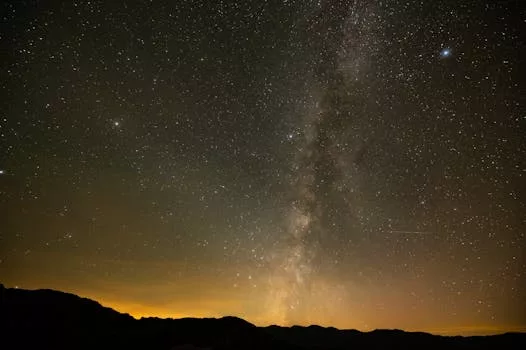
“
Beyond the Milky Way: Imagining New Worlds and Possibilities
Introduction to the Wonders of Space
Beyond the Milky Way: Imagining New Worlds and Possibilities is a concept that has fascinated humans for centuries. The idea of exploring the vastness of space beyond our galaxy and discovering new worlds is a tantalizing prospect that has captured the imagination of scientists, philosophers, and science fiction writers alike. For more on this theme, check out Charting New Realms: The Journey of Imagination Beyond the Stars.
The Milky Way is just one of billions of galaxies in the observable universe, each containing billions of stars and potentially habitable planets. The possibility of life existing elsewhere in the universe is a topic of ongoing research and debate, with scientists using a variety of methods to search for signs of life, such as the detection of biosignatures in the atmospheres of exoplanets. This quest is detailed in From Stardust to Dreams: Imagining Life Beyond the Stars.
Exploring the Cosmos
Space exploration has come a long way since the launch of the first artificial satellite, Sputnik, in 1957. Since then, humans have walked on the Moon, sent robotic missions to Mars and beyond, and established a permanent human presence in space with the International Space Station.
However, despite these achievements, we have only scratched the surface of what is possible. The universe is vast and largely unexplored, with many mysteries waiting to be uncovered. From the formation and evolution of galaxies to the nature of dark matter and dark energy, there are many unanswered questions that scientists are eager to address. To delve deeper into the creative aspects of this exploration, consider reading Cosmic Creativity: How Imagination Soars Beyond the Constellations.
Imagining New Worlds
One of the most exciting aspects of exploring the universe is the potential for discovering new worlds. Exoplanets, which are planets that orbit stars outside of our own solar system, offer a glimpse into the diversity of planetary formation and evolution. Some exoplanets are similar in size and composition to Earth, while others are gas giants or icy worlds that are unlike anything found in our solar system.
The discovery of exoplanets has also raised the possibility of finding life beyond Earth. While we have not yet found definitive evidence of extraterrestrial life, the existence of exoplanets with conditions similar to those of Earth suggests that the possibility of life existing elsewhere in the universe is quite high.
Takeaways
- The universe is vast and largely unexplored, with many mysteries waiting to be uncovered.
- Space exploration has the potential to reveal new worlds and possibilities that await us.
- The discovery of exoplanets has raised the possibility of finding life beyond Earth.
- Imagining new worlds and possibilities is a powerful tool for inspiring scientific inquiry and exploration.



